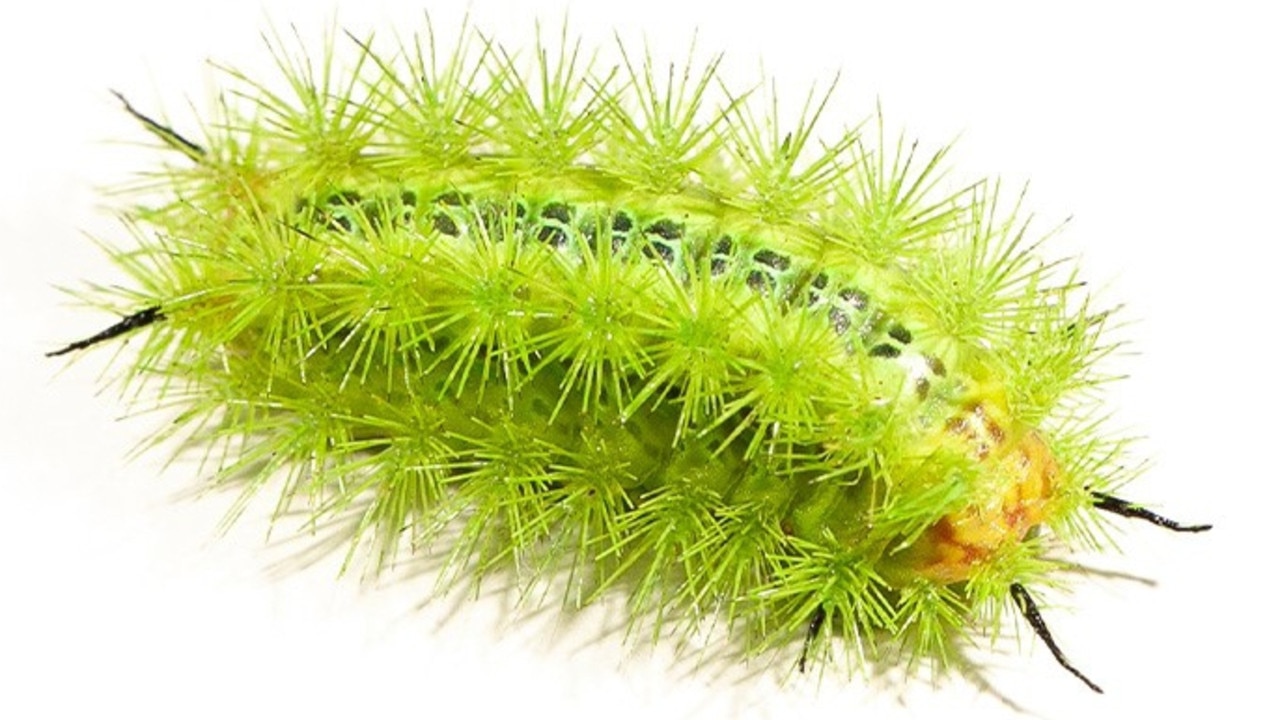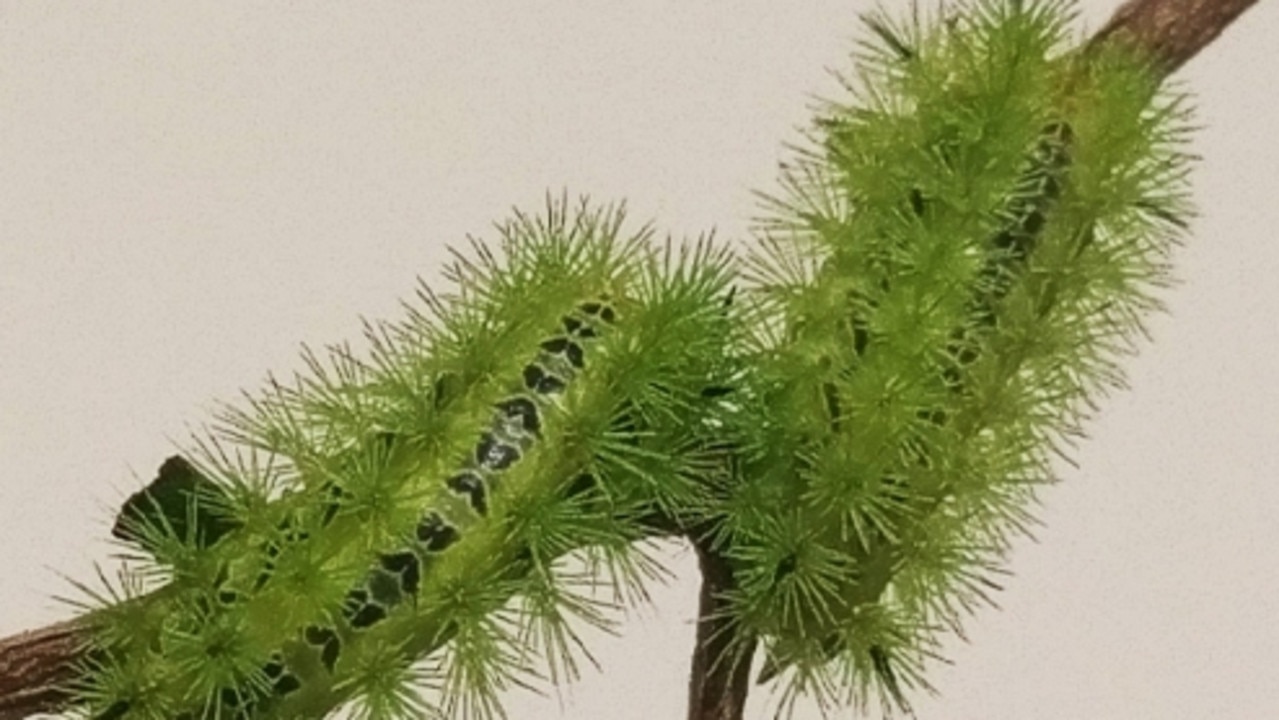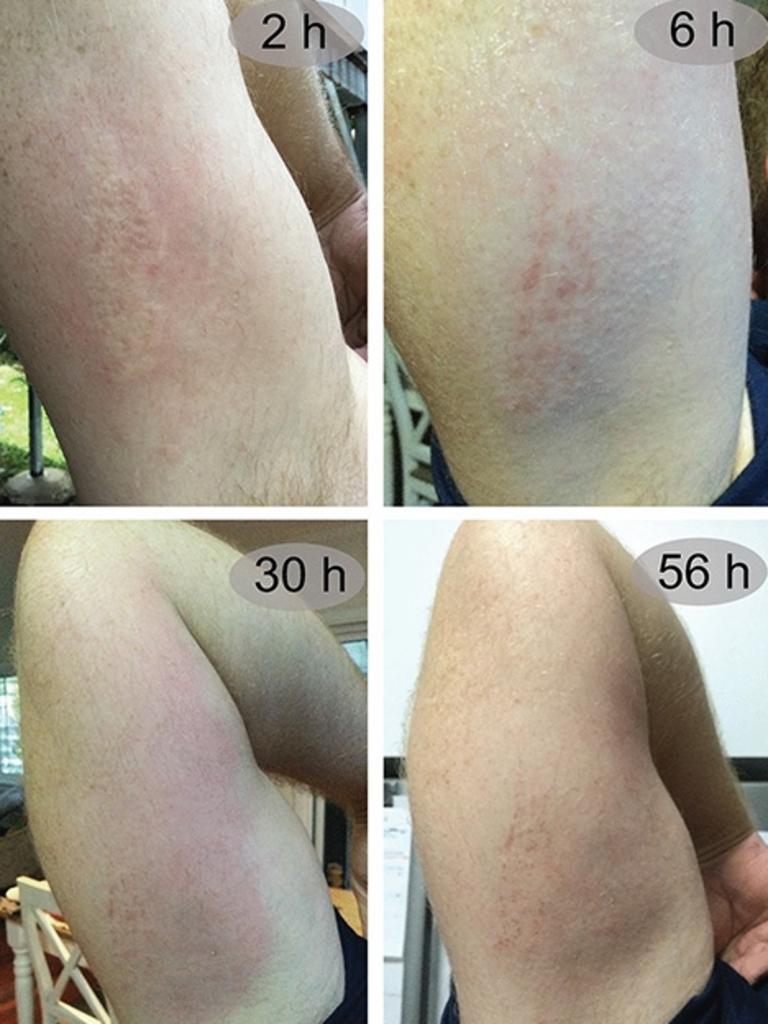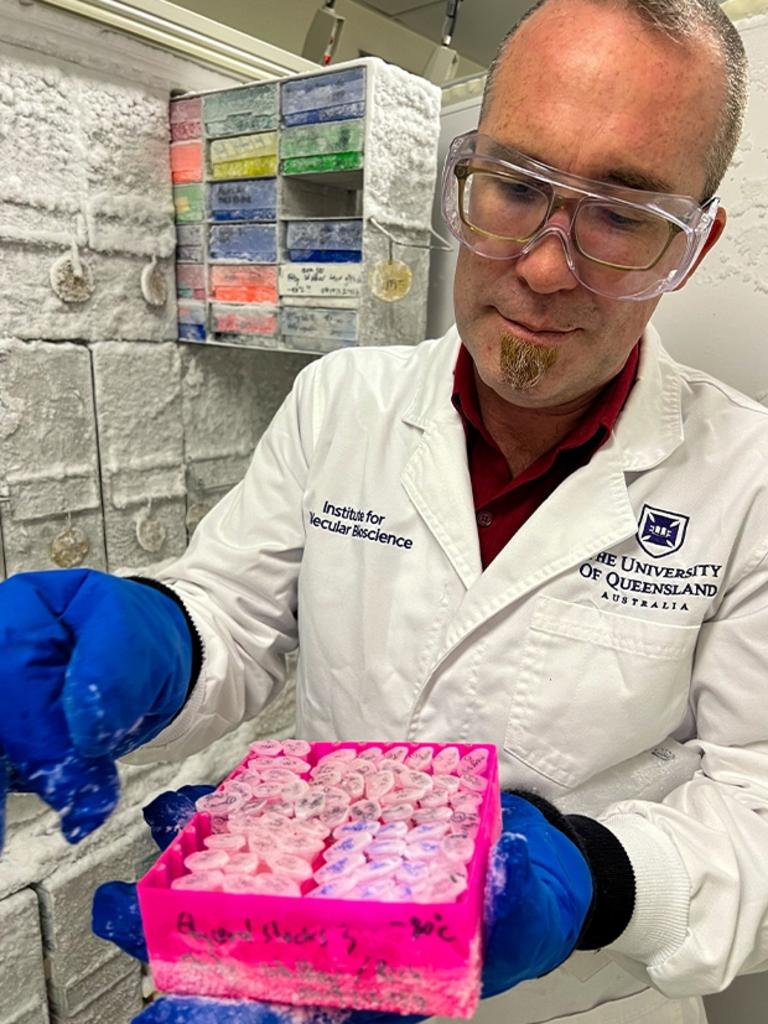Painful electric caterpillar venom could be used to make medicine
Long seen as a spiky menace to the gardeners of Townsville, the electric caterpillar has a painful and venomous sting that scientists say could be used in a surprising way

READING LEVEL: GREEN
A venomous* caterpillar with a ferocious sting regarded as a menace to Townsville gardeners could provide researchers with sources for new medicines and insecticides*.
Dr Andrew Walker of the University of Queensland’s Institute for Molecular Bioscience* said the “electric caterpillar” could “cause a severe itch, sting or burning sensation” that lasted for days.
“All caterpillars do is eat and grow, and they don’t move very fast, so are very vulnerable to predation* – their defence mechanisms* include camouflage, irritative hairs, and venom-injecting spines,” Dr Walker said.

Dr Walker, a molecular entomologist* with an interest in caterpillars and their venom, said his team travelled to Townsville in the hunt for the vibrantly coloured, spiky caterpillar of the comparatively mundane* Comana monomorpha moth.
“We heard about this caterpillar with a ferocious sting and were keen to test its venom, so went up to Townsville to find one – it hangs out on lilly pillies, so we looked in any lilly pilly we came across,” he said. “After a couple of days of no luck, we put a message on some community gardening discussion boards, and received an outpouring of stories of the extreme pain and hospital visits these caterpillars have caused.”


Dr Walker said the venom caused long-lasting lesions*, with little relief available from ice packs or the usual sting-relief gels*.
He said the venom was similar to that produced by a family of American insects called asp caterpillars, which are also known for their painful stings.
“It’s a really different composition to the venoms produced by the other species in this family we have studied so far, which provides exciting possibilities for finding useful molecules in the venom that we can use in other ways,” Dr Walker.
POLL
GLOSSARY
- venomous: containing venom or poison
- insecticides: chemicals used to kill or control unwanted insects
- molecular bioscience: a study of the way cells and molecules work together
- predation: being hunted by animals
- defence mechanisms: the ways an animal or insect defends itself from predators
- molecular entomologist: someone who studies the inner workings of insects
- mundane: boring or plain
- lesions: sores
- sting-relief gels: gels applied to an insect sting or bite in order to soothe irritation
EXTRA READING
Finding a cure for peanut allergies
Bees’ survival creates major buzz
Vaccine battle to save Aussie icon
QUICK QUIZ
1. What are two defence mechanisms of the electric caterpillar?
2. Where in Australia are electric caterpillars commonly found?
3. Which plant do they live in?
4. What could the venom of the electric caterpillar potentially be used in?
5. The venom is similar to that of which family of American insects?
LISTEN TO THIS STORY
CLASSROOM ACTIVITIES
1. Top tips to stay safe
Write a list of five things that Townsville gardeners can do to stay safe from the "electric caterpillar".
Time: allow at least 20 minutes to complete this activity
Curriculum Links: English, Science
2. Extension
"Don’t hate us – we are just trying to protect ourselves." Rewrite the story from the point of view of one of the caterpillars, using this statement as your headline. Use what you have learned from the story and perhaps your research skills to help you to find more information to help you.
Time: allow at least 45 minutes to complete this activity
Curriculum Links: English, Science
VCOP ACTIVITY
Read this!
A headline on an article – or a title on your text – should capture the attention of the audience, telling them to read this now. So choosing the perfect words for a headline or title is very important.
Create three new headlines for the events that took place in this article. Remember, what you write and how you write it will set the pace for the whole text, so make sure it matches.
Read out your headlines to a partner and discuss what the article will be about based on the headline you created. Discuss the tone and mood you set in just your few, short words. Does it do the article justice? Will it capture the audience’s attention the way you hoped? Would you want to read more?
Consider how a headline or title is similar to using short, sharp sentences throughout your text. They can be just as important as complex ones. Go through the last text you wrote and highlight any short, sharp sentences that capture the audience.


